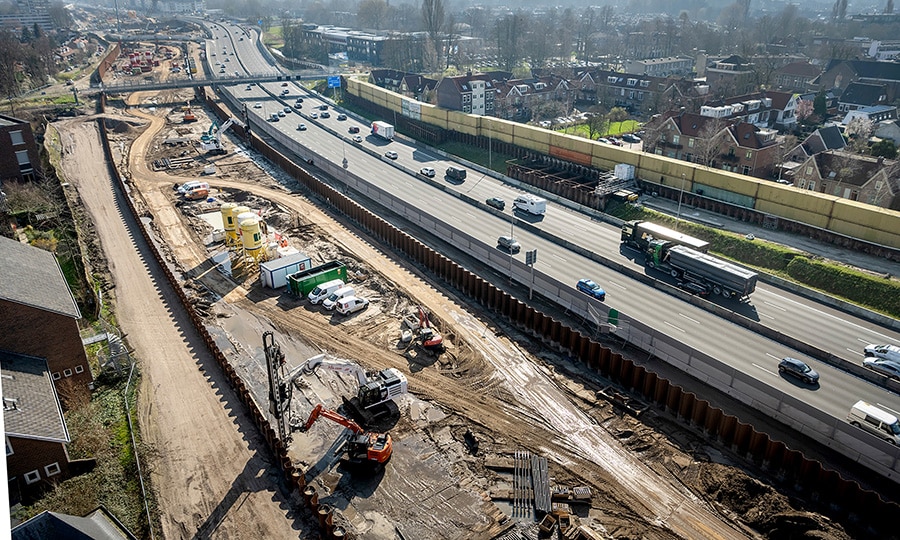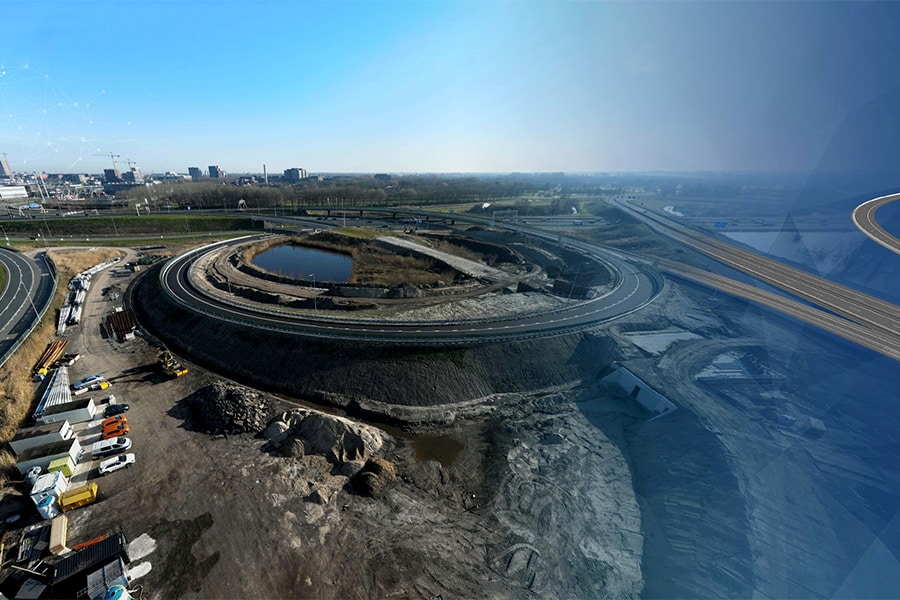
"The Aanpak Wegtunnels Amsterdam program touches on the city's accessibility and mobility."
An interview with Ronald Siebrand, AWA program director
"Since 2012, I've really had a thing for Amsterdam," Ronald opens the conversation. "My Amsterdam adventure began with the renovation of the East Line stations. Also, I experienced the 'tail' of the construction of the North-South line." Ronald works on behalf of the City of Amsterdam, specializing in improving existing projects.
The Metro and Tram Directorate is bringing in outside expertise for the AWA program. Ronald was no stranger through his work on the East Line and is now ultimately responsible for implementing the AWA program plan. "I get caught every time by the dynamics of this city," he explains. "Here you have to deal with the people of Amsterdam, with the complexity of the city and with a bit of politics involved in these kinds of projects. The Aanpak Wegtunnels Amsterdam program touches the accessibility and mobility of the city."

Objectives of the AWA program
The program plan for AWA was drafted in late 2018 and approved by the city council in 2019. Ronald outlines the goals: "First, the City of Amsterdam must make its tunnels safe for today's road traffic. Second, the aim is to create a future-proof tunnel area, ready for tomorrow's world, safe to use, easy to operate and easy to maintain. The fact that we are also revamping monitoring and operation and addressing multiple tunnels simultaneously ensures robust availability across the board. One of the things taken into account in the designs is shorter and less invasive decommissioning of the tunnels during future operations."
The AWA program consists of four projects. The Piet Hein Tunnel, which is undergoing a complete renovation; the Amsterdam ArenAtunnel, which is also undergoing a complete renovation; the Michiel de Ruijter Tunnel, which is receiving an upgrade in terms of fire safety; and the construction of a new traffic control center. "The key point is that after being addressed, all tunnels will be fully compliant with tunnel legislation," Ronald said.
Uniform operating concept
"Because we also do the traffic control center, we can look at operation at each tunnel. Now each tunnel is still operated in its own specific way from the current traffic center. However, with the new traffic center on the LCM site on the Van Marwijk Kooystraat, we are moving toward a uniform operating concept. That's what makes AWA so interesting; we can do so much more as a result. The five Amsterdam tunnels will soon be monitored and operated from a uniform control desk; we're talking about the Piet Hein Tunnel, the ArenAtunnel, the Michiel de Ruijter Tunnel, the IJ Tunnel and the Spaarndammertunnel. That is the strength of the AWA program, all the knowledge and expertise is transferred across the projects to the other tunnels. The Piet Hein Tunnel, for example, provides the blueprint for the new operation and control system for the ArenAtunnel," Ronald knows.

No more unicates
Easy operation via the new traffic control center will soon give road traffic controllers new tools to do their job. "Because of the renovations and upgrades within the AWA program, the renovated tunnels will soon be completely up to date and safe. In addition, the tunnels will be easier to maintain because we are saying goodbye to so-called 'unicates.' This means that you will no longer find unique installations that make maintenance difficult. In the Piet Hein Tunnel and the ArenAt Tunnel we are going to standardize as it is called, installations are of modular construction and the starting points for the design are identical to each other. This saves time and money during maintenance or repair. This will make it easier and faster work for maintenance parties and work will be less stressful for road traffic."
The need to renovate and upgrade
All tunnels in Amsterdam were built after the war, and the installations of a number of tunnels were simultaneously reaching the end of their lifespan. According to Ronald, there was some catching up to do: "There simply used to be less attention to maintenance and adjustments. The resulting backlog reached a high point-or should we say a low point. In 2018, we looked not only at how the tunnels could again comply with the Tunnel Act, but also at the coherence of the individual tunnel projects. We wanted to create lasting added value through synergy. Investing on the front end means reaping the benefits on the back end."
Ronald believes that the choice to tackle and renovate the old now has been a wise one. "Personally, then, I look to the administration of the City of Amsterdam for putting management and maintenance back on the political agenda by committing to renovating the old. That honors the city and is also sustainable. It is nice to see how all parties within the program are proud of their work and I also note proud ownership of the work by the employees. The same goes for me, I prefer to be on site with my boots in the mud."



